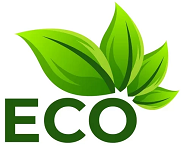Introduction
Green roofing and insulation technology have gained significant attention in recent years due to their potential to mitigate environmental issues and improve energy efficiency in buildings. As the world becomes more conscious of the need for sustainable practices, the construction industry is embracing innovative solutions to reduce carbon footprints and create greener spaces. This blog post explores the future trends in green roofing and insulation technology, highlighting the advancements that are shaping the industry.
2. Advancements in Green Roofing
Green roofing systems have evolved significantly over the years. The future of green roofing is expected to witness the following trends:
2.1. Enhanced Plant Selection
Researchers are focusing on developing plant species that are better suited for green roofs. These plants will be more resilient to extreme weather conditions, require less maintenance, and provide improved insulation and stormwater management.
2.2. Integration of Technology
Green roofs will incorporate advanced technologies such as sensors and irrigation systems to optimize plant health and reduce water consumption. These technologies will enable remote monitoring and automated maintenance, making green roofs more efficient and cost-effective.
2.3. Lightweight and Modular Systems
Future green roofing systems will be designed to be lightweight and modular, allowing for easy installation and customization. These systems will be adaptable to different building types and will offer flexibility in terms of design and plant selection.
3. Innovations in Insulation Technology
Insulation technology plays a crucial role in improving energy efficiency and reducing carbon emissions. The future of insulation technology is expected to witness the following trends:
3.1. Aerogel Insulation
Aerogel, a lightweight and highly insulating material, is gaining popularity in the construction industry. It offers superior thermal performance and can significantly reduce energy consumption. In the future, aerogel insulation is expected to become more affordable and widely used.
3.2. Vacuum Insulation Panels
Vacuum insulation panels (VIPs) provide excellent thermal insulation due to their low thermal conductivity. These panels are thin and lightweight, making them ideal for retrofitting existing buildings. The future will see advancements in VIP technology, making it more cost-effective and accessible.
Summary
Green roofing and insulation technology are rapidly evolving to meet the demands of a more sustainable future. The integration of vegetation and eco-friendly materials in roofing systems not only enhances the aesthetic appeal of buildings but also provides numerous environmental benefits. Improved insulation materials and techniques are being developed to minimize heat loss and reduce energy consumption. This blog post delves into the emerging trends in green roofing and insulation technology, such as the use of modular green roofs, advanced insulation materials, and smart energy management systems. By adopting these future trends, we can create more energy-efficient and environmentally friendly buildings that contribute to a greener planet.
- Q: What is green roofing?
- A: Green roofing refers to the practice of installing vegetation and plants on the roof of a building, providing numerous environmental benefits such as improved insulation, stormwater management, and reduction of the urban heat island effect.
- Q: What are the future trends in green roofing technology?
- A: Some future trends in green roofing technology include the development of lightweight and modular systems, integration of solar panels within green roofs, and the use of advanced irrigation and monitoring systems to optimize plant health.
- Q: How does green roofing contribute to energy efficiency?
- A: Green roofing helps improve energy efficiency by providing natural insulation, reducing the need for heating and cooling. The vegetation and soil act as a barrier, reducing heat transfer and lowering energy consumption.
- Q: What are the benefits of green roofing?
- A: Green roofing offers several benefits, including improved air quality, reduced stormwater runoff, increased biodiversity, extended roof lifespan, and enhanced aesthetic appeal. It also helps mitigate the urban heat island effect and can potentially lower energy costs.
- Q: What is insulation technology?
- A: Insulation technology refers to the materials and techniques used to reduce heat transfer and improve energy efficiency in buildings. It helps maintain a comfortable indoor temperature, reduces energy consumption, and lowers heating and cooling costs.
- Q: What are the future trends in insulation technology?
- A: Future trends in insulation technology include the development of high-performance and eco-friendly insulation materials, such as aerogels and vacuum insulation panels. There is also a focus on improving installation techniques and integrating insulation with smart building systems.
- Q: How does insulation technology contribute to energy savings?
- A: Insulation technology minimizes heat transfer through walls, roofs, and floors, reducing the need for heating and cooling. This leads to significant energy savings and lower utility bills, while also improving indoor comfort and reducing greenhouse gas emissions.
- Q: What are the benefits of insulation technology?
- A: Insulation technology offers benefits such as improved energy efficiency, reduced carbon footprint, enhanced thermal comfort, noise reduction,


